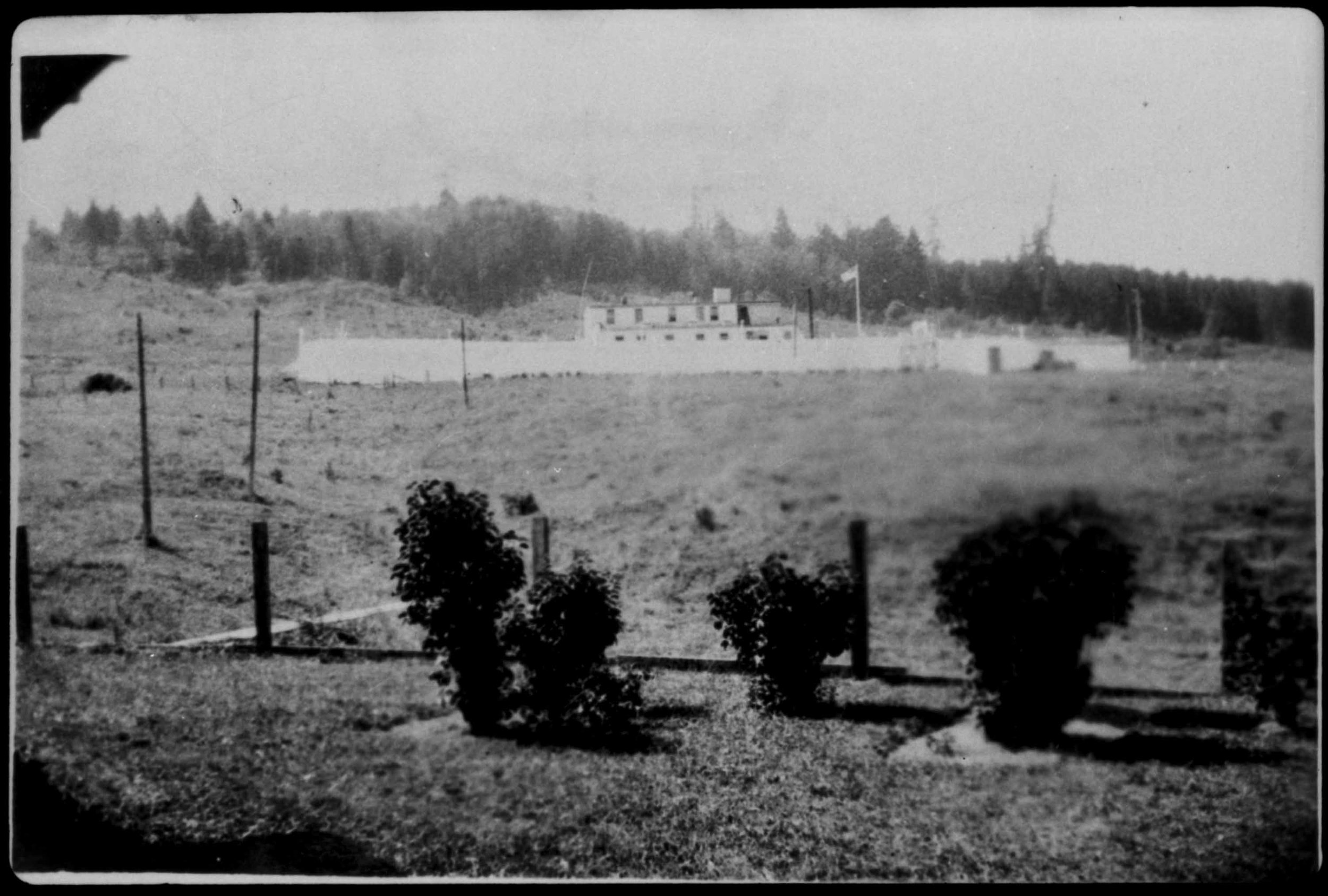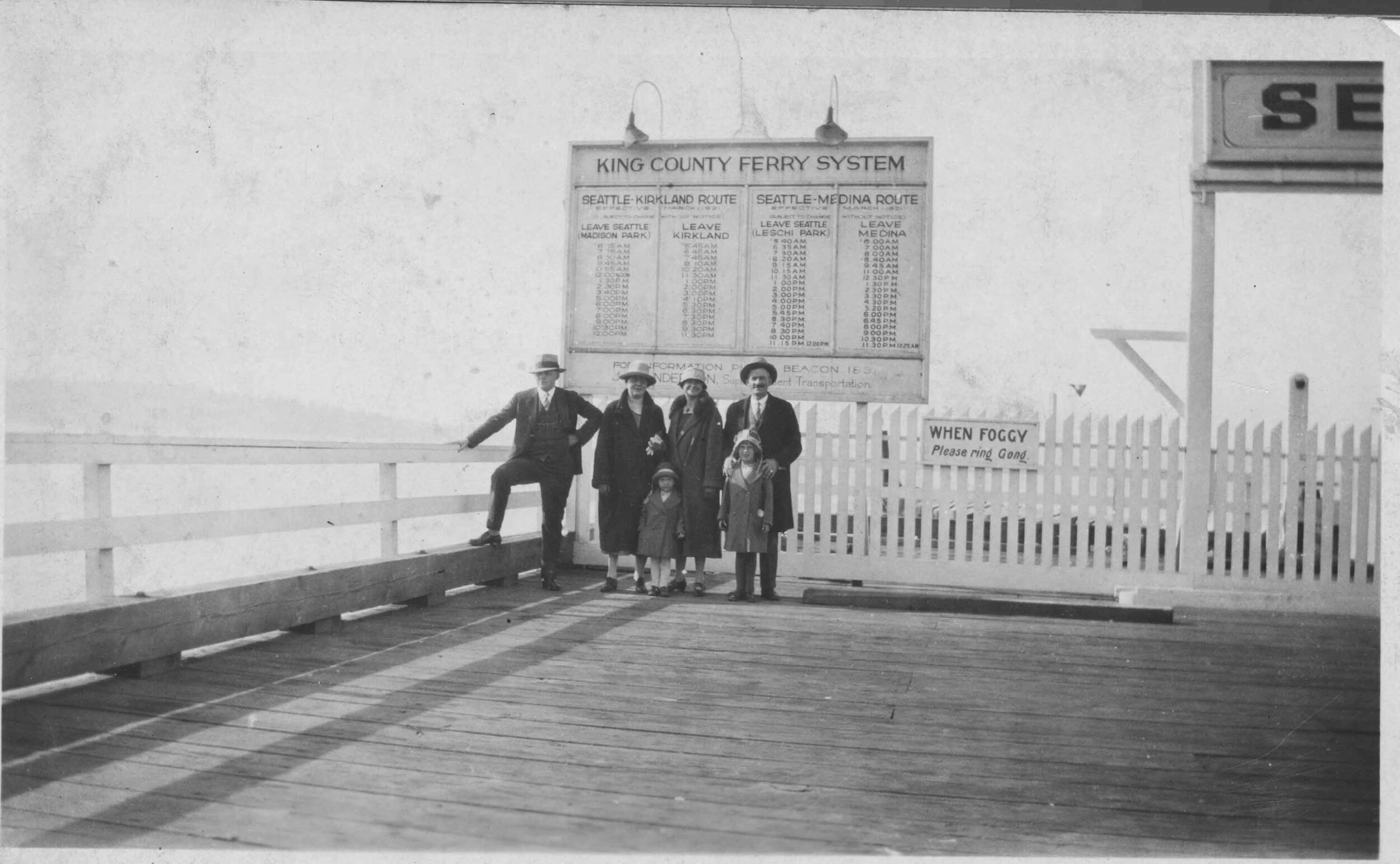In 1913, the Washington State legislature passed a series of bills that would collectively come to be nicknamed the "Lazy Husband's Act”. They authorized county commissioners to use individuals convicted of family desertion or non-support for municipal labor projects. The individuals' wages would be paid to their wives or families. The plan was designed with the goal to complete King County projects, while financially supporting these families.
Following the passage of the “Lazy Husband’s Act”, King County set about the construction of a detention facility in Bothell. This first stockade assigned tasks like stump clearing and road repair to the inmates. When those municipal projects were completed, the stockade moved to an area between Bothell and Woodinville. This new stockade was tasked with building new roads in the area. Around 1916, the stockade moved again, this time to the Willows.
L 92.002.007 - King County stockade, 1926.
The Willows property was developed by Charles Douglas (C.D.) Stimson. He and his brother Frederick made their fortunes in the lumber industry at the end of the 19th century and purchased several parcels of land in the area. The Willows property was originally conceived as a campsite for duck hunting and fishing, as a weekend getaway for the Stimson family and friends. Eventually, C.D. built a lodge on the land and opened the Willows Shooting club.
Then, in 1916, King County bought the Willows property for $126,000. This became the new home of the Municipal Stockade, where the inmates grew crops or tended dairy cattle - producing food for themselves and the County Poor House. Wives and children still received a stipend for the inmates work.
Left: Map of Willows Property circa 1919, courtesy Road Service Map Vault
Right: Map of Willows Property circa 2022, Google
The Willows stockade faced financial hardship right from its inception. High cost and low yield led to questions about its sustainability as a detention facility. According to some accounts, the inmates intentionally contributed to the farm’s poor output.
“Once put on bread and water, prisoners retired reluctantly to the fields…but proceeded to hoe the roots off plants. Crops withered in hours.”
L 92.002.008 - Men in field going back to stockade, 1926.
There are anecdotes of illicit moonshine production, lax security, and poor management. One inmate reportedly asked for an extension of his sentence, calling the Willows his ‘country home’. Still, for 16 years the farm remained operational.
Finally in 1932, King County closed "The Willows", transferring prisoners to the county jail. In the following decade the farm was sold, the lodge burned down, and the remaining farming implements were turned to scrap to aid in the war-effort.
Resources
Eastside Heritage Center Archives
Hawkinson , L. (2015). Blackberry Preserves The Journal of the Kirkland Heritage Society.
Hollywood Farm (Woodinville). (n.d.). Retrieved October 31, 2022, from https://www.historylink.org/File/20163
Seattle retires Chain Gang and opens the Municipal Workhouse and stockade on Beacon Hill on July 1, 1909. Seattle retires chain gang and opens the Municipal Workhouse and Stockade on Beacon Hill on July 1, 1909. (n.d.). Retrieved October 31, 2022, from https://www.historylink.org/File/3011
Sharp, J. (1967, September 6). From plush drunk tank to cow farm and finally to rockets; history of York Farm traced. Sammamish Valley News.














